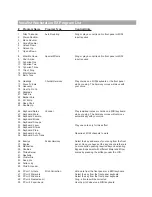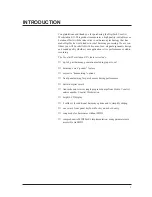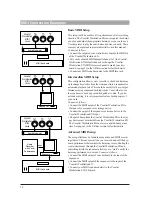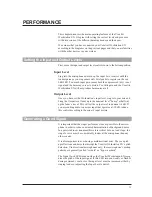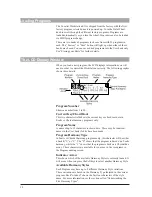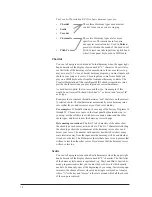
7
Song
mode is for editing and performance of ÒsongsÓ which are sequences
of chord changes, key types and variations triggered by MIDI, the front
panel, or a footswitch.
4) Data Wheel
In Factory, User and Song modes, the Data Wheel selects and loads pro-
grams. In Edit mode, it increases or decreases the value of the selected para-
meter.
5) The Softkeys
These keys perform different functions in each different mode; They select
harmony variations in the Programs mode and configuration parameters in
the Program or Song Edit and Utilities modes. For further information on
how these relate to different Programs, see pages 13, 16 & 18.
The Left and the Right Arrow button become active when the
♦
and
∅
char-
acters are seen in the top corners of the LCD within Edit or Utility mode.
Pressing either of the page buttons will present the next or previous editing
screen.
6) Keyboard
This one-octave keyboard allows you to input musical information such as
Key and Chord root note. The keyboard can also be used to select a cue-in
note, which is selectable from the Utilities menu.
7) Edit mode group
The
Edit
button presents the parameter editing screens from within Factory,
User and Song modes.
The
Exit
button backtracks through successive menu layers in all editing and
programming modes.
The
Store
button offers the option of saving an edited program in the User
bank. For more information on editing Programs, see the Editing chapter.
8) Front Panel Mixer section
These faders allow you to modify mix levels quickly. They are ÒglobalÓ
controls in that they affect all programs. They are also relative to the mixer
settings within each program. To allow you room to Ònudge the level up a
bitÓ and to reproduce the factory programs as they were mixed, you should
align the Lead, Harmony and Reverb faders with the raised bump placed at
70% of each faderÕs travel, which is called the Ònominal level".
The
Lead
level fader controls the amount of your dry, unprocessed voice in
the mix. If the Lead voice is turned off in any particular program, this control
will have no effect, and there will be no dry, unprocessed voice output from
the Workstation regardless of the Bypass position.
The
Harmony
level fader controls the level of the harmony voices in the
mix. If the Harmony voice is turned off in a particular program, this control
will have no effect
The
Reverb
Level fader controls the amount of reverb added to the com-
bined lead and harmony voice mix. Each Program allows you to store unique
lead and harmony reverb levels.
The
Input
control varies the input level for the microphone and line inputs.
The raised bump in the control corresponds to 0 dB.
The
Output
control varies the output level for both left and right outputs
and the Headphone jack. The raised bump in the control corresponds to 0
dB at +4 dBu nominal, the professional standard for signal levels. If your
mixer accepts semi-pro signal levels (-10 dBu) you should reduce this
fader.
Summary of Contents for VOCALIST Workstation EX
Page 1: ...VERSION EX 1 2...




